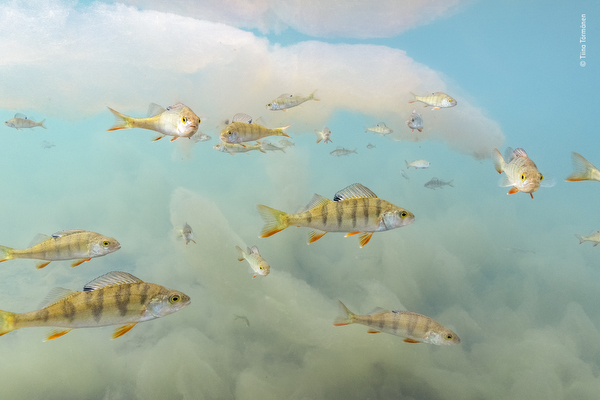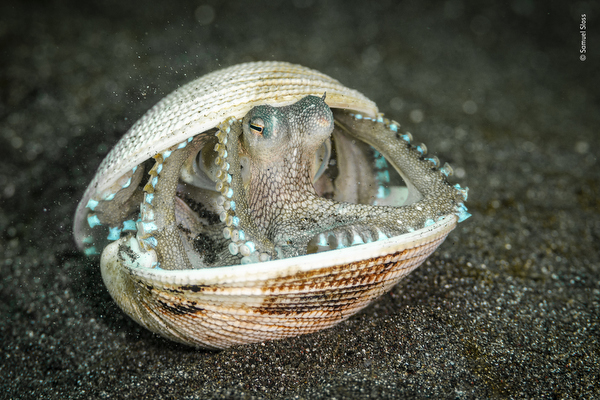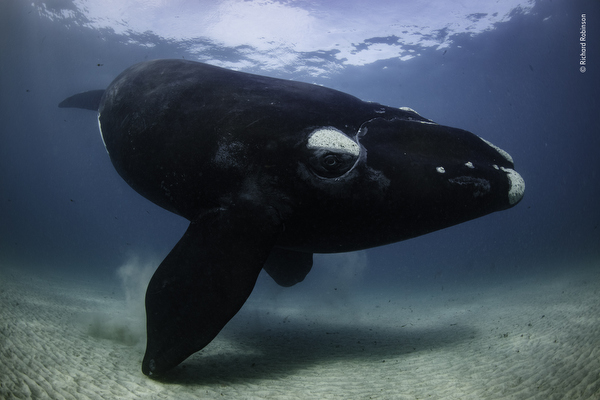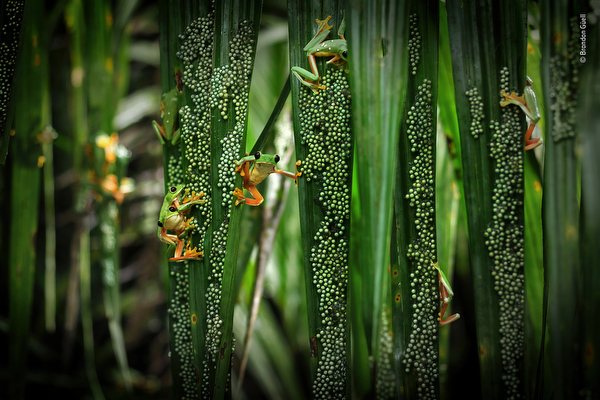Preview: Wildlife Photographer of the Year
As a teaser, the Natural History Museum has released a series of images that were awarded as highly commended for this year’s Wildlife Photographer of the Year contest. Below are some of the underwater/marine-related images.

Underwater wonderland by Tiina Törmänen, Finland
Highly commended, Under Water
Tiina Törmänen floats through sheets of cloud-like algae in search of fish.
Tiina was thrilled to meet a school of inquisitive European perch on her annual lake snorkel. During the previous three years she had only ever found dead fish. Submerged in the surreal scene, she framed the orange-finned fish flying through clouds of pink-tinged algae.
Although it created a beautiful scene, excessive algal growth, a result of climate change and warming waters, can cause problems for aquatic wildlife as it uses up oxygen and blocks out sunlight.

The octopus case by Samuel Sloss, Italy/USA
Highly commended, 15-17 Years
Samuel Sloss is spotted by a coconut octopus, which peeks out from its clam-shell shelter.
Samuel was muck diving when he noticed this octopus. He lowered the power of his strobe lamp so as not to distress it. The octopus shut the lid of the shell when Samuel approached, but then slowly opened it, revealing colors and coils.
This small octopus hunts mainly shrimps, crabs, clams and small fishes. To protect its soft body when foraging on sand or mud, it hides in various objects – sometimes even coconut shells.
Location: Lembeh Strait, Sulawesi, Indonesia
Technical details: Nikon D300 + 105mm f2.8 lens; 1/320 sec at f6.3; ISO 200; 2x Inon Z-240 strobes; Nauticam housing

The right look by Richard Robinson, New Zealand
Highly commended, Animal Portraits
Richard Robinson becomes the object of fascination for a young whale.
With the whale investigating him, Richard’s main challenge was to swim far enough from the curious calf to photograph it. The encounter lasted 30 minutes, with the whale circling him, swimming off, then returning for another look.
New Zealand’s population of southern right whales, known as ‘tohorā’ in Māori, were hunted to near extinction by European whalers in the 1800s, then by Soviet whalers in the 1900s. Now protected, the population has bounced back from a small group including just 13 breeding females, to more than 2,000 individuals.
Location: Port Ross, Auckland Island, New Zealand
Technical details: Canon EOS 5DS R + 8–15mm f4 lens at 15mm; 1/500 sec at f4.5; ISO 640; Aquatica housing
Shot under New Zealand Department of Conservation permit #84845-MAR

Treefrog pool party by Brandon Güell, Costa Rica/USA
Highly commended, Behaviour: Amphibians and Reptiles
Brandon Güell wades through murky water to document a rare breeding frenzy of frogs.
Plagued by mosquitoes, Brandon waded chest-deep into the murky water where a gathering of male gliding treefrogs were calling. At dawn thousands of females arrived at the pool to mate and lay their eggs on overhanging palm fronds. Here, unmated males search for females to mate with.
These spectacular mass-breeding events occur in only a few remote locations, a few times a year. Each female lays around 200 eggs, creating huge egg masses. Eventually the tadpoles will drop into the water below.
Location: Osa Peninsula, Puntarenas, Costa Rica
Technical details: Canon EOS 70D + 50mm f1.8 lens; 1/125 sec at f2.8; ISO 250